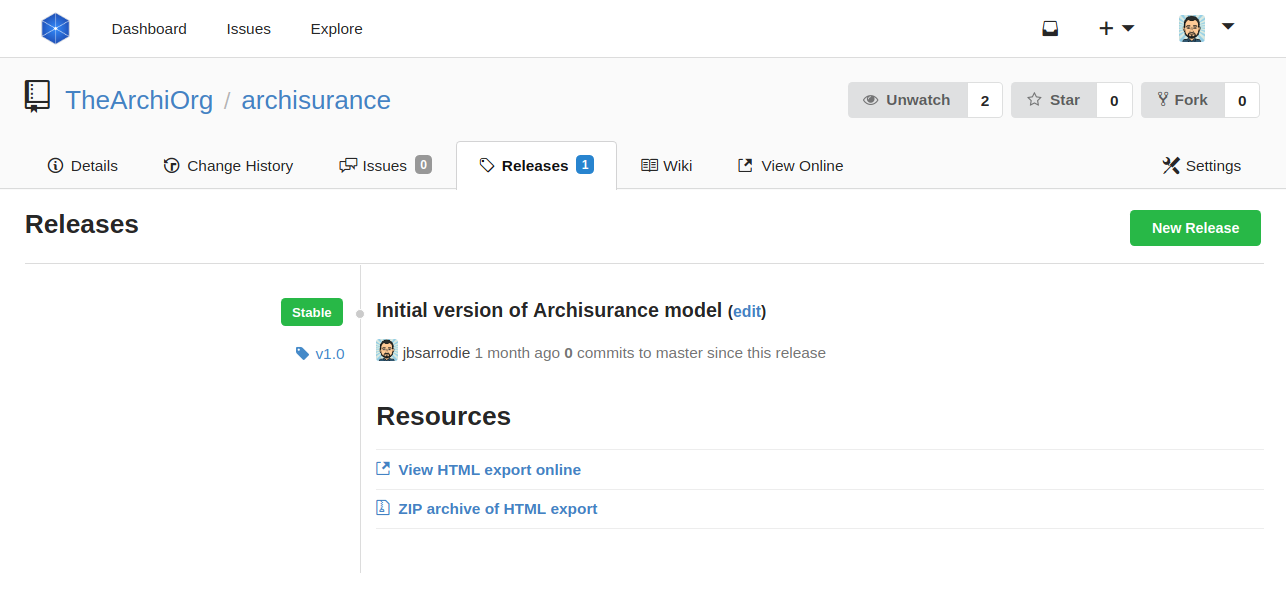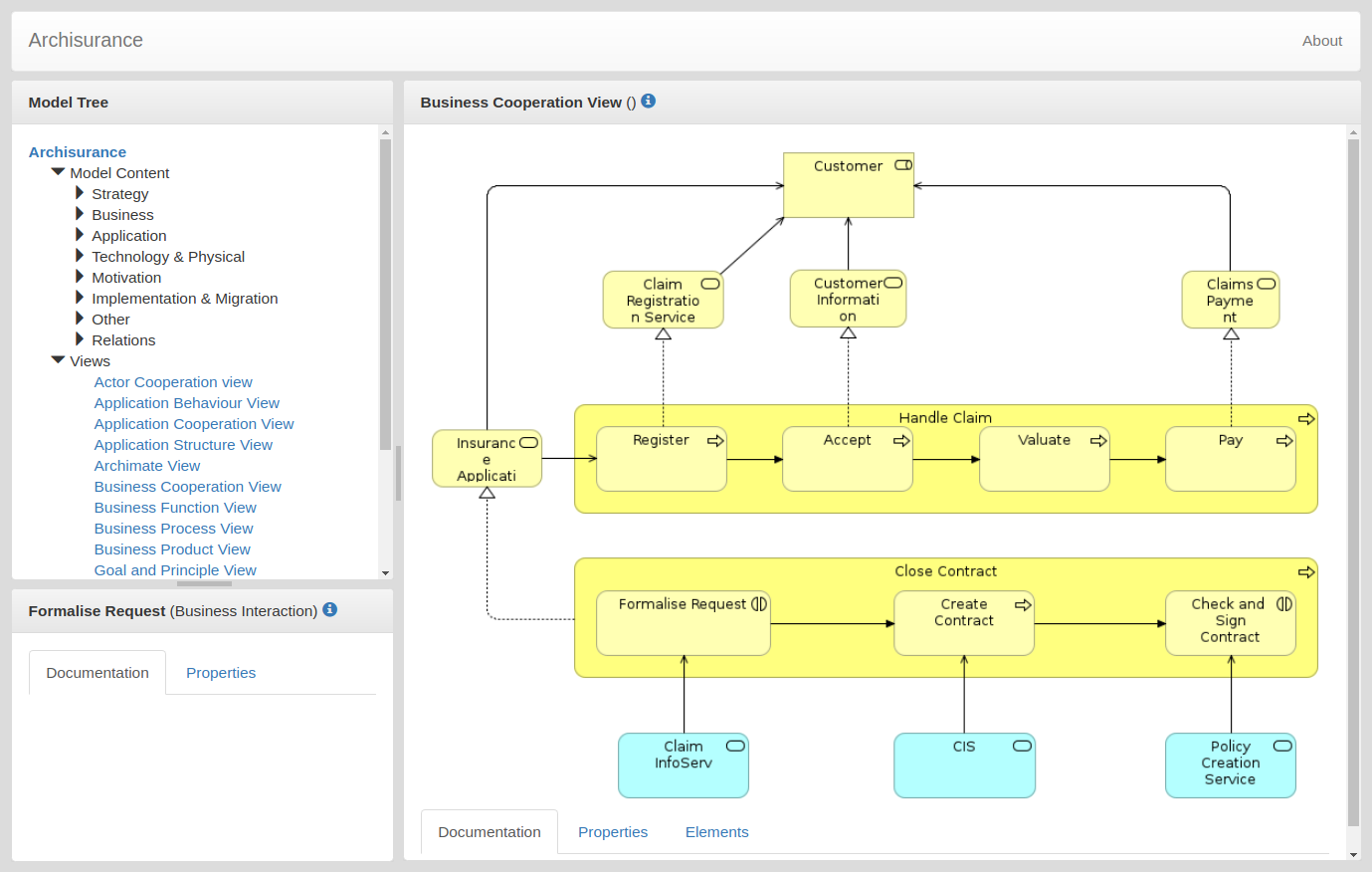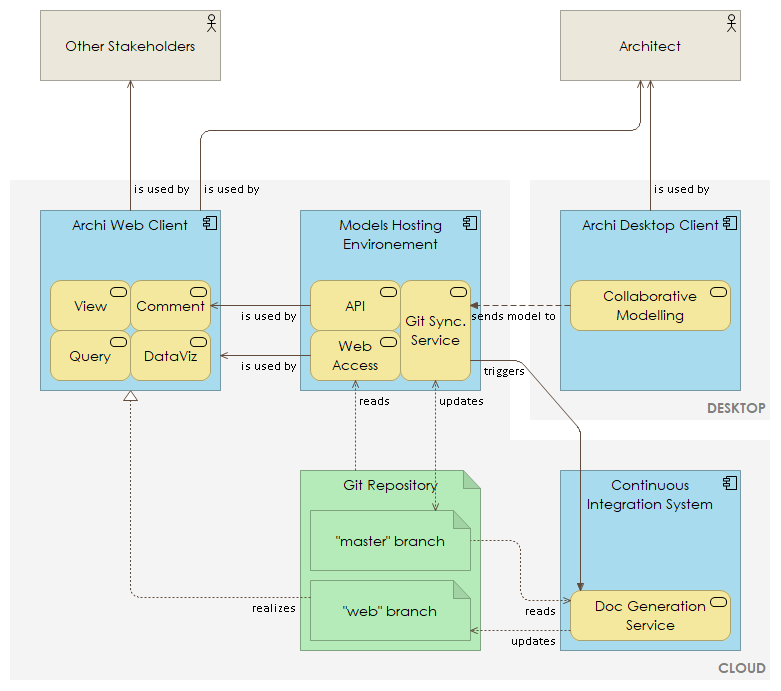In a previous post I explained why we should use ArchiMate in an Enterprise Architecture practice. Before moving on with “How to quickly create value with ArchiMate?“, I’d like to provide some guidance on modelling tools.
About tooling
When setting up an Enterprise Architecture capability, we will, at some point, have to choose a tool to write and maintain architecture descriptions. This choice is not an easy one, and I would maintain that this is not the right question to answer. The first question concerns the underlying “language” that will support architecture descriptions, and by “language” I don’t mean a technical language, but language as a set of words that will be used for day to day architecture activities. My personal opinion on this is that as soon as we work in the field of Enterprise Architecture, we need a language that covers a wide scope (encompassing strategy, business, application, technology…) and is a recognised standard (trust me, you don’t want to reinvent the wheel). Such a standard language already exists: ArchiMate.
This leads us to my “number one” requirement: find a tool that supports the ArchiMate language.
This limits the choices we have. Tools that claim to support the ArchiMate language should really be certified by The Open Group. A tool that claims to support the language but is not certified should generally be double-checked as some features might not be present, or poorly implemented, and there may be no guarantee that the tool vendor will support future versions of the language. Fortunately, The Open Group maintain an official register of certified tools.
So where does this leave Archi, as it is not on the official register of tools? Because Archi is open source and is not backed by a company with a necessary legal framework, it is not possible to pay the certification fees and it is therefore not listed in this register. However, Archi does fulfil all requirements of ArchiMate tool certification. Furthermore, I contribute to the internal ArchiMate Forum inside The Open Group and am therefore able to help Phil Beauvoir with the required changes each time a new version of the standard is published.
So we are left with a relatively small list of potential tools (as of writing): 6 commercial tools and Archi.
These tools can be classified into two groups:
Generic (software) modelling tools
On the one hand, there are generic modelling tools that support many meta-models (more than 100 in some cases). Most of these are designed primarily for UML and implement other meta-models through UML profiles. However, this can lead to a poor user experience, making them hard to use by people with little to no technical ability.
Enterprise Architecture modelling tools
On the other hand, there are tools primarily designed to support an Enterprise Architecture capability. Most of these support also other standards (often UML and BPMN) in addition to ArchiMate.
Which tool should be chosen?
Most tools have their pros and cons, so there is no good or bad choices per se. In addition, all certified tools (and Archi) support the ArchiMate Model Exchange File Format which provides interoperability between tools. This is important as this means that one can start with a given tool and switch to another one later without losing existing architecture models. With that in mind, my general recommendation would be to start with Archi as it covers most Enterprise Architecture related needs in a simple and friendly UI. Then, when requirements evolve over time, and after some years of practice, it might be necessary to move to another tool (for example to support UML or BPMN in addition of ArchiMate).
Being open source, Archi is one of the most widely used ArchiMate modelling tools. It is downloaded on average about 5,000 times per month and used by most training organizations, making it the tool of choice for people discovering ArchiMate. It also supports a wide range of features, either directly or through plug-ins:
- Fully compliant with ArchiMate.
- Supports Canvas view (free diagrams based on notes and connections, can be used for Business Model Canvas, SWOT…).
- Supports import from, and export to the ArchiMate Model Exchange File Format.
- Supports import from, and export to CSV
- Supports export to standard formats such as PDF, DOC, PPT
- Supports export to a fully navigable HTML version of a model which includes a SQL compatible database engine (in the browser)
- Supports collaborative modelling – through a plug-in
- Supports scripting – through a plug-in
The collaboration feature is made possible through an innovative approach that uses a Git repository to store the model. All interactions with Git are managed by the plug-in through a simplified UI. Until recently, it was up to the user to provide their own (SaaS or on premise) Git hosting platform (such as GitHub, Atlassian BitBucket or GitLab), but there is now a (still in beta) Archi Collaboration Server platform that follows the same principle as the collaboration plug-in: making it as easy as possible to collaborate, without having to worry about the underlying technology supporting the service.
With this new platform, it becomes easy to create releases of your architecture documentation:
…and then view it online:
This new collaboration platform will soon be open sourced. Here is an overview of the whole system (made with Archi of course):
Time to wrap up?
Let’s summarize:
- Focus on your Architecture practice, not on the tool.
- If you work in the field of Enterprise Architecture you need a tool that supports the ArchiMate standard and fulfils the requirements defined by the Open Group.
- Start with Archi: being open source, free and supporting the ArchiMate Model Exchange File Format, you won’t have pushback in your organization (and if people around you are aware of ArchiMate, they will certainly already know it).
- Leverage the whole Archi ecosystem: use the collaboration plug-in and (when available) the Archi Collaboration Server.
- As maturity grows, if you really need another modelling tool, choose one that focuses on Enterprise Architecture, not software modelling.




Hey Jean-Baptiste,
Is the Collaboration Server open for beta-testers?
best regards
pascal
Not for the moment, but if you share your email with me (through a private message on Archi forum), I will let you know as soon at it will be available (should be in january).
Regards,
JB
Cool, i did it from scratch (GOGS+GoCD+Apache), and had some troubles (cannot generate in CLI with linux, cannot get long full file names under windows).
I think the greatest thinks (next) would be a good API to build our own reports trough an SPA (I want a sexy portal with my Applications list, or Collaborations).
Here is a simple web explorer that can work with Archi exported CSV
https://tinyurl.com/y24o2kbz
Cheers